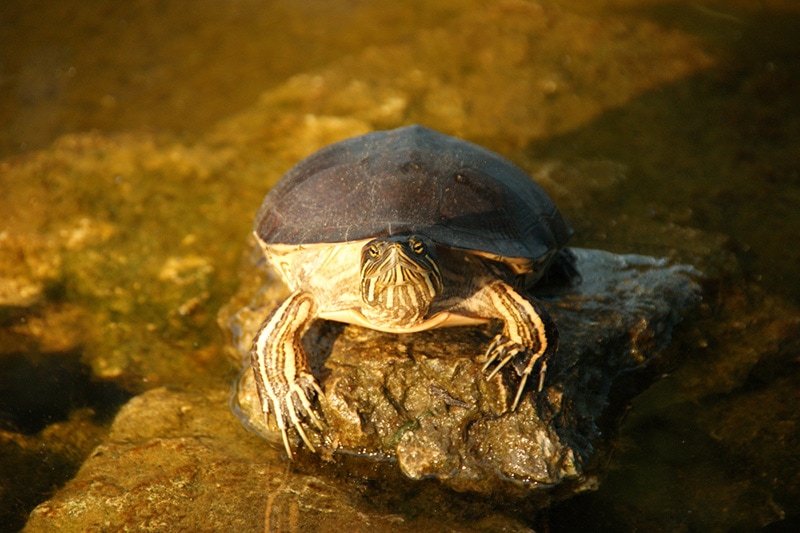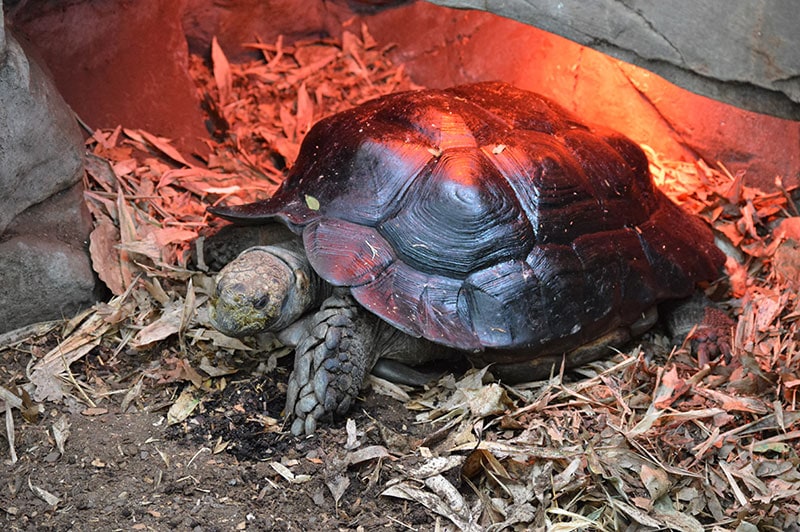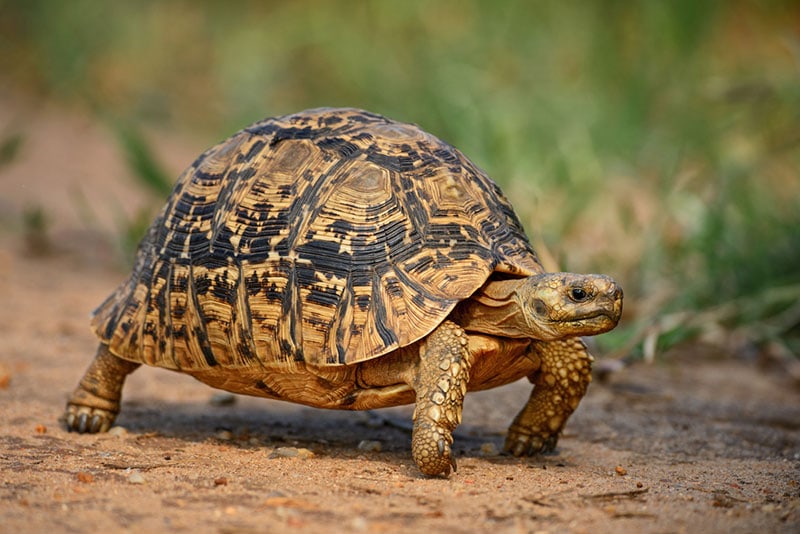How Do Tortoises Mate? Vet Reviewed Reproduction Facts
Updated on
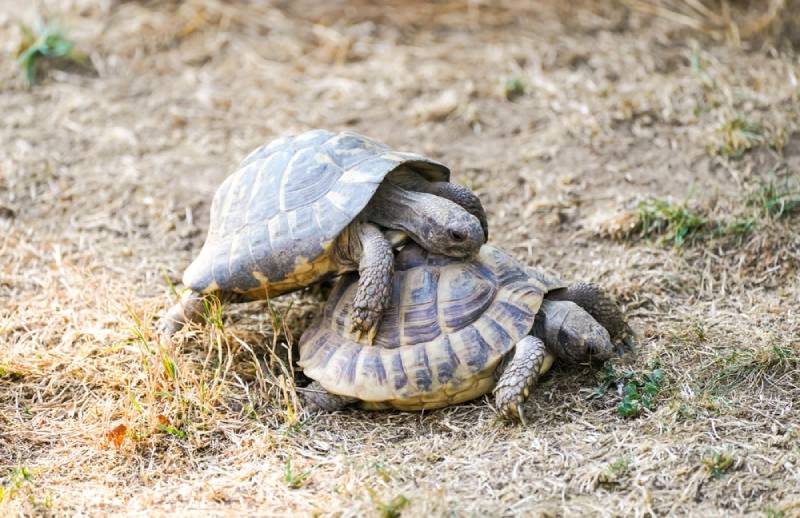
Click to Skip Ahead
Like humans, tortoises must copulate to produce young. However, unlike many humans, tortoises do not court, marry, or stay together as a family when they decide to make babies. So, how exactly do tortoises mate and reproduce? Scientists do not have all the answers, but there is plenty known about the reproduction of tortoises that gives us good insight into how these animals mate. For one thing, tortoises have courtship rituals and can be a bit aggressive during the process.
Let’s break down what is known about the mating of tortoises.
Species Is Important
According to the Tortoise Protection Group, in order for reproduction to be successful, tortoises must mate with the same species1. In some cases, like with the Spur-Thighed tortoises, even the sub-species must be the same when reproducing with each other. This helps minimize risks of disease transmission and genetic inconsistencies. Crossbreeding can result in malformed hatchlings due to genetics, infertile eggs, and infertile offspring that do survive. In the wild, tortoises reproduce with others from the same species, so there is no need for human intervention. However, tortoises in captivity can end up mating with others from different species if their caretakers are not careful to keep them separated.
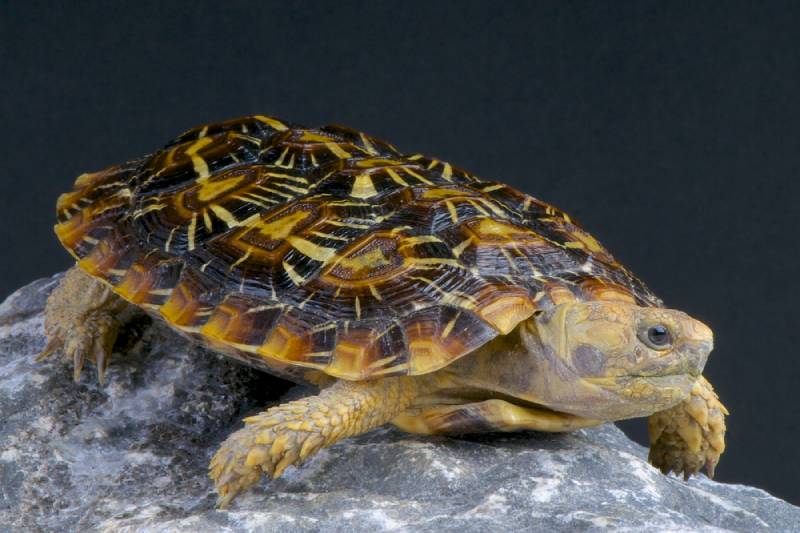
Here’s How Most Tortoises Mate
The exact mating rituals that a tortoise exhibits depend on their species, but every male tortoise has a kind of “song and dance” that they do before eventually mounting the female from behind to procreate.
- Vocalizations
- Aggressive pushiness
- Shell butting
- Biting the head, shell, and limbs of prospective female mates
Typically, a male will circle a female and then start biting on her head and the edges of her shell as he positions himself behind her. Once a female relents, she positions herself to allow access to her cloaca, which is where she will accept the male and his sperm. The male and female may copulate multiple times before mating is over, and he could be extremely vocal while doing so.
Here’s When Most Tortoises Mate
Tortoises can mate at any time of the year when they are not hibernating. However, mating tends to be most common during the spring months. These animals do not start mating until they are fully grown adults, and the time that it takes for them to become ready for mating depends largely on how well they eat. The better they eat, the quicker they will grow to their full size.
Therefore, domesticated tortoises tend to be ready for mating sooner than wild tortoises just because they have access to all the food that they need to thrive. Once a tortoise is fully grown and ready to mate, they are likely to try and do so whenever they have the opportunity.
Egg Nesting
After copulating, a female can hold onto a male’s sperm for several years and use it to fertilize eggs multiple times throughout those years when she’s ready. When she does lay her eggs, it is usually done during May, June, and July. Some tortoises lay multiple clutches of eggs weeks apart. A female tortoise’s eggs will incubate for anywhere between 90 and 120 days, depending on the specific environment and temperature conditions.
To nest her eggs, a tortoise uses her hind legs and tail to dig holes that are about 4 inches deep. She will then place her eggs in those holes and cover them up. A female tends to lay an average of four to eight eggs at a time, sometimes even more. The larger the tortoise, the more eggs she will produce in a single clutch.
A female tortoise might stick around for a while as protection, but she will soon wander away and never give her eggs a second thought. She won’t come back to ensure their safety or viability as time goes on. The babies will be on their own once they hatch. Tortoises are vulnerable to the environment and predators, but that vulnerability decreases as they grow in size.
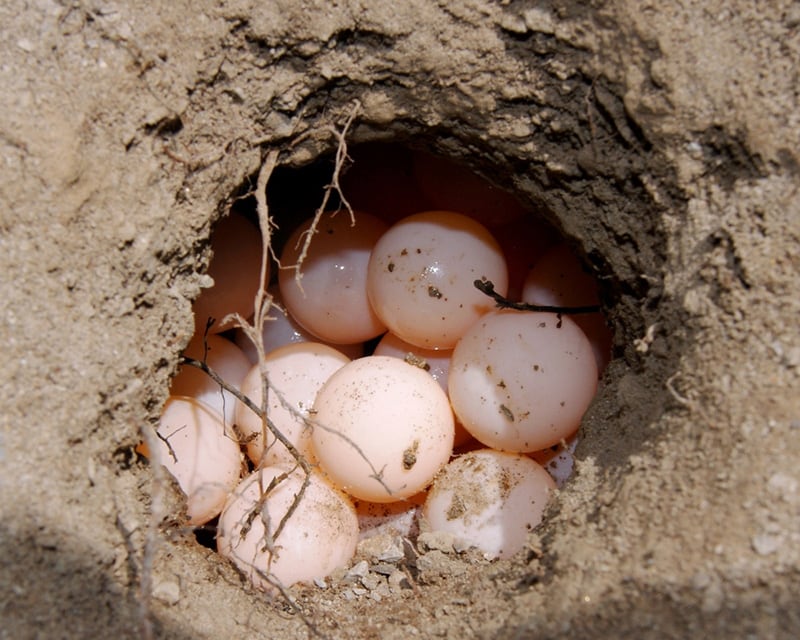
Conclusion
Tortoises procreate when they become fully grown, and the act can be quite alarming and/or funny when seeing it for the first time! The males can get quite aggressive as they work to mate with females. The mating rituals might be different depending on the species, but ultimately, all tortoises copulate in the same way.
Featured Image Credit: Elly Miller, Shutterstock



